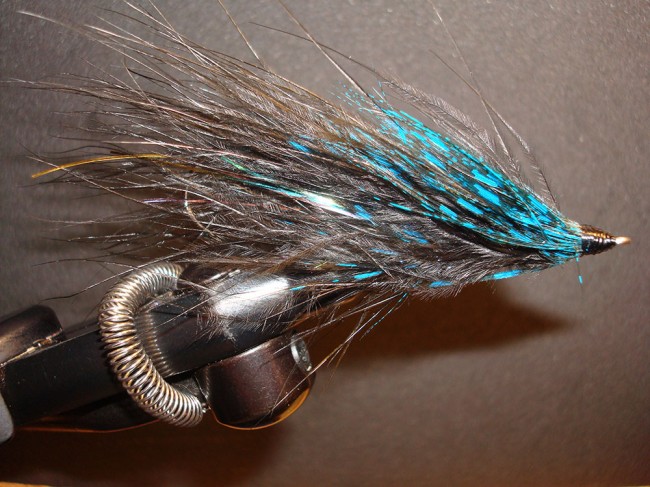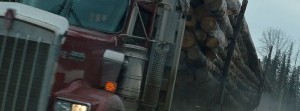
Photo Credit: Brian Smith
On the Fly
It has been said that steelhead are the “fish of a thousand casts.” While this is true some of the time, as when the fish cannot be found in the river, it’s also true that once you have located them they are not hard to entice to the fly if you can pass the lure within three feet of them.
I’ve found that the largest obstacle to being a successful steelheader is river conditions: high and dirty water from a river blowout is the last thing you wish for on your expensive once-a-year steelhead vacation. This hex has happened to me too often to dwell upon—but not this year!
Bulkley River conditions around Smithers were perfect the third week of September: the river clear, but not too clear; the weather good, but not too good; the forecast decent for the week, but not too decent. The fishing had been slow for most anglers: those hooking more than one fish per day were deemed successful. Lucky for me, my partner for the week was Dale Freschi, a fish magnet that, now retired, spends most weeks fishing and filming in places most fly-fishers can only dream about.
We stayed at the Fireweed Inn, an older-but-clean and convenient little motel in downtown Smithers that caters to fly-fishers during the fall season. Ideally, you want a place that is reasonably priced, a room where you feel comfortable hanging your wet waders and drying your boots after a long day on the river, restaurants a short walk away and your vehicle outside the room’s door.
We fished the runs below Smithers by jet boat, putting in at the Chicken Creek public launch, jetting downriver as far as the canyon where Driftwood Creek flows into the Bulkley and working our way back upriver through holding waters—water less than waist deep that flows at walking speed, usually situated on inside or outside river corners where the stream makes a sharp turn. Steelhead will rest here before continuing their spawning journeys, usually travelling beside a mate they have paired with—catch one and you can often hook both.
The fly tackle required to fish steelhead and all spawning salmonids must be strong but forgiving—this is not the place for inexpensive gear. I like to fish an eight-weight, 11-foot switch rod, which takes both single-handed and Spey casts admirably. The beauty of a Spey-type rod is its versatility when you are up against a bank or bushes and having to make roll casts, plus they are easier on old, aching back and shoulder muscles than the single-handed versions.
Reels need to be top quality with a disc-drag feature and a large-arbour spool that holds at least 200 yards of 30-pound test backing plus fly line. You will need a floating line matching your rod weight that will accept various sink-tips of different grains, which will put you near the bottom of the river where steelhead are usually lying. These are called Versi-Tip lines and can be purchased as a wallet set that will cover all sinking speeds you will need to match the swiftness and depth of the river to your fly selection.
Fly selection for steelhead fishing varies with the water conditions, but it’s usually a safe bet that combinations of black-blue, purple-blue and pink, all with some flash, will attract them. I always recommend checking with your local sporting goods stores for what is going on, what flies are working and where the fish are biting.
True to the saying, I hooked four steelheads that week, landing only one—a nice one of about 18 pounds.



